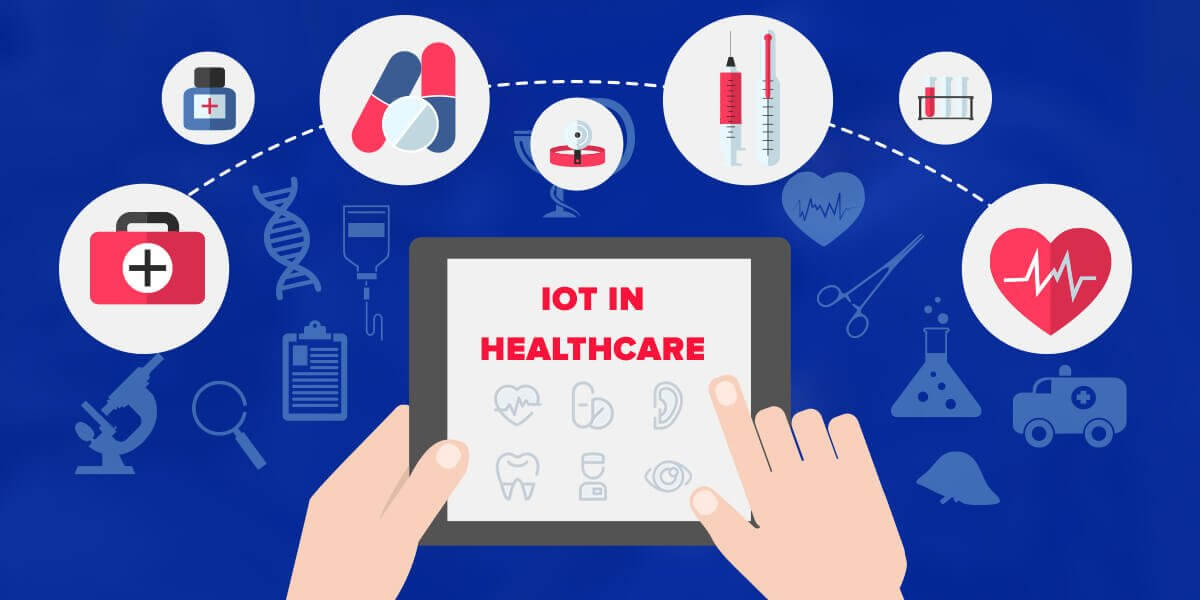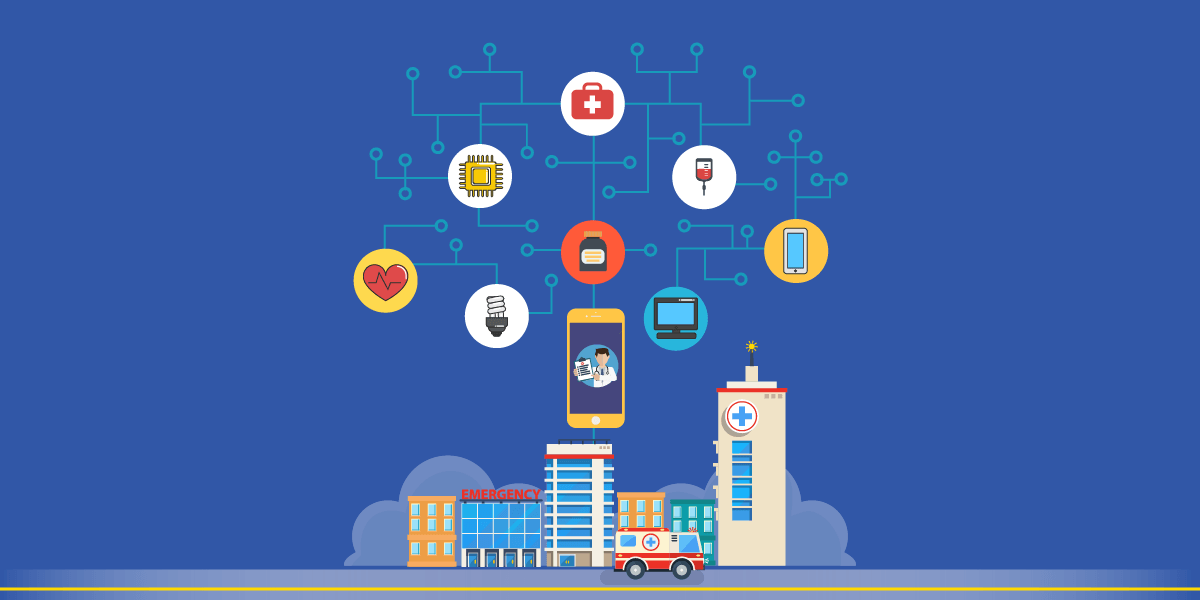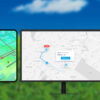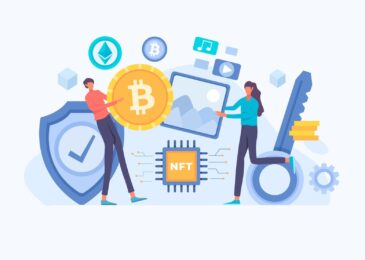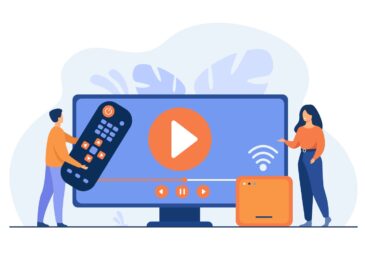How Does IoT Resolves Healthcare Industry Problems?
How Does IoT Resolves Healthcare Industry Problems?
Although today is a time of growth, it’s a time of growing pains as well. In the midst of the pandemic faced by the world, the healthcare industry faces several challenges. To meet the changing demands of people requiring health services and care, the industry continues to embrace new technologies, which optimize operations to support medical professionals, aside from technologies that improve patient conditions and help save lives.
Technology in the Healthcare Field –
Technology has brought about a welcome and huge change to the industry. Healthcare software development companies have been providing various services to the field for some time now. Today, patients could access some of the new and cutting-edge treatments, the best diagnostic tools, and a lot of minimally-invasive procedures that result in faster healing and less pain.
Targeted treatments, remote consultations, and availability of intuitive mobile applications, all have led to enhanced patient care and overall superior healthcare experience. The availability of new treatment technologies, furthermore, is leading to better outcomes, improving the quality of life. Health IT, or Health Information Technology describes the infrastructure and technology used for recording, analyzing, and sharing patient health data.
Health Information Technology aims to provide better care and help to achieve health equity. Health IT supports the recording of patient data to boost the delivery of services and enable an analysis of the information for both healthcare providers and healthcare government agencies.
Also Read – Can Digitized Medical Records Provide An Edge To Healthcare Industry?
Check Out How Does IoT Resolves Healthcare Industry Problems –
Based on the market forecast, the demand for IoT in the healthcare market globally would reach $534.3 billion by 2025. The growth projected highlights the significant role that IoT devices would continue to play as they’re used for a huge range of apps, like operations management, patient monitoring, and so on.
The technology has solved several healthcare pain points. Let’s find out what these pain points are as below –
1. Medical Errors –
Sadly, medical mistakes that could have been prevented have led to hundreds of thousands of deaths each year. Mistakes sometimes are inevitable, but IoT could help reduce a lot of errors in the industry. Healthcare service providers could use IoT-connected wristbands to verify the identity of a patient immediately, preventing mix-ups.
They could check for allergies or other critical medical information. When recording data, machines don’t make typos like humans, thus the IoT technology is an invaluable tool to store and check patient data.
2. Inefficiency –
Even the best doctors and hospitals have room to grow in terms of patient care. A lengthy duration between visits, long waiting times, not enough collection of data, and a huge range of other issues could prevent healthcare professionals from providing the best possible care.
The Internet of Things could boost patient care in several ways. One of the most widely-used and effective apps is the IoT-connected sensors on medical devices and hospital wristbands. The sensors could gather patient information, send it to the clouds so healthcare workers could see it in real-time.
It minimizes the need for collecting and inputting data manually, thus it lets the staff use their time in a more efficient manner and reduce patient waiting times. Moreover, healthcare centers use IoT-connected devices as well, for monitoring patients’ glucose levels, heart rate, blood pressure, as well as other vital information. When the information is tracked and reported in real-time, the healthcare staff would instantly know in the event of an emergency.
3. Operational Expenses –
The healthcare industry has so many expenses, and the best way of reducing costs while maintaining quality care is to boost efficiency. Transferring data is much easier and faster for IoT devices than humans doing it manually.
Moreover, with IoT, less work is required from staff, meaning lesser operational costs. Also, this reduces the risk of time-consuming and expensive data entry errors.
4. Managing Disease –
Chronic health issues, such as cancer, obesity, and arthritis impact millions of people worldwide. For those with chronic diseases, healthcare is a day-to-day issue. Every single day, patients require disease management tools, not only during doctor visits.
IoT-connected devices could monitor blood pressure, heart rate, cholesterol, body temperature, and various other medical details. These devices could be used by patients to check their information regularly to ensure that nothing is wrong. Doctors could keep track of the status of their patients and could intervene if needed.
5. Rural Communities Healthcare –
A lot of rural areas have enough hospitals, physicians, and other healthcare resources to provide quality care for the entire population. Easier communication between doctors and patients is easier even if they’re not able to meet in person.
IoT-connected devices could be used by doctors to keep tabs of patient data. Along with video conferencing, doctors could help virtually help patients with several health issues. The system does not always replace in-person visits, however, it could significantly boost accessibility for rural areas.
6. Managing the Supply Chain –
Hospitals require a secure supply chain for medications as well as other supplies. A common issue in the healthcare industry is counterfeiting, which could lead to medical emergencies, inferior patient outcomes, and even death. An effective solution to this issue is to attach IoT sensors to drugs and medical supplies.
Hospitals could check the devices to ensure that the inventory received is the same as what the manufacturer sends. IoT devices, even without counterfeiting, could improve supply chain management.
7. Research –
The most critical factor in making healthcare advancements, but scientists and doctors often face obstacles when attempting to conduct studies. Data collection could be streamlined by IoT, easing the burden on researchers. With the help of the Internet of Things, researchers could gather and store huge amounts of information, which would be hard or even impossible to manage without technology.
Moreover, IoT helps researchers to consistently collect information over a long period of time. It isn’t the perfect solution to each problem in the industry. Yet, there are still several concerns for the technology in healthcare software development that prevents it from being implemented in every healthcare institution or hospital.
For instance, establishing and maintaining a system of IoT devices in a big hospital could be costly. Researchers, however, are always working on improving IoT for the industry. All over the world, a lot of hospitals have improved patient care and enhanced efficiency with IoT-connected devices.
What Are Benefits of IoT in the Healthcare Industry?
1. End-to-End Affordability and Connectivity –
IoT helps automate healthcare and patient workflow through mobility solutions. In the healthcare field, IoT enables machine to machine communication, interoperability, data movement, and information exchange that makes healthcare service delivery very cost-effective. The tech-driven setup could bring costs down through using better quality resources and cutting down on visits that are unnecessary.
2. Simultaneous Monitoring and Reporting –
Monitoring in real-time via connected devices could save millions of lives in case of a medical emergency, such as diabetes, heart failure, asthma attacks, and so on. With real-time monitoring in place by means of a smart medical device that’s connected to a smartphone application, connected devices gather useful health-related and medical data.
The connected device gathers and transfers health data, including oxygen, blood pressure, weight loss, blood sugar levels, and ECGs among others. Data is stored in the cloud and could be shared with an authorized person, such as a doctor, an insurance fir, an external consultant or a participating health company.
3. Alerts and Tracking –
Alerts and real-time tracking in life-threatening scenarios could become a savior to safeguard critical health with constant real-time alerts and notifications for proper analysis, monitoring, and diagnosis. IoT-powered healthcare mobility solutions allow alerting, real-time tracking, and monitoring. This allows better accuracy, hands-on treatments, and apt intervention by physicians, thus boosting the entire patient care delivery results.
4. Remote Medical Assistance –
It’s a terrible scenario for a patient wanting medical assistance, but unable to connect to a doctor because of hindrances, such as lack of knowledge and location. IoT-enabled mobility solutions could help patients with the right medical assistance on the go. Patients could take medical prescriptions at the comfort of their homes via healthcare delivery chains that are connected to patients through Internet of Things devices.
5. Data Analysis and Assortment –
For healthcare pros, managing a huge amount of data is not as easy as it seems. The data gathered in real-time, via IoT-enabled mobile devices could be segregated and analyzed via IoT-powered mobility solutions. This reduces raw data collection and could drive vital healthcare analytics as well as data-driven insights that reduce errors and speed up decision-making ultimately.
Internet of Things Applications in Healthcare –
Because of its various use scope in different sectors, the rise of IoT is exciting for everyone. In the healthcare field, it has several apps, which include the following:
- Ingestible sensors – These genuinely are modern-science marvels. These sensors are pill-sized that could keep track of the medication in the body and warn if it detects any irregularities. They could be a boon for diabetics since it helps curb symptoms and provide an early warning.
- Moodables – Are mood-boosting devices that help improve mood throughout the day. It may seem like science fiction, but not far from reality. These are head-mounted wearables, which send low-intensity current to the brain, elevating a person’s mood.
- Hearables – Are hearing aids of the new age, which have entirely changed how people suffering from hearing loss interact with the world. Today, they’re compatible with Bluetooth, which syncs a smartphone with it. It enables filtering, equalizing, and adding layered features to real-world sounds.
- Computer Vision Tech – Along with Artificial Intelligence, the computer vision technology has given rise to drones, which aims in mimicking visual perception and thus, decision-making based on it. Drones, such as Skydio use this technology to detect obstacles and navigate around them. Moreover, the technology could be used for people who are visually impaired to efficiently navigate.
Conclusion –
The Internet of Things has changed how facilities are delivered to the healthcare field. Furthermore, the connected devices help resolve the issues commonly faced by the industry.
Also Read – How IoT And Mobile Is Driving Business Growth?
